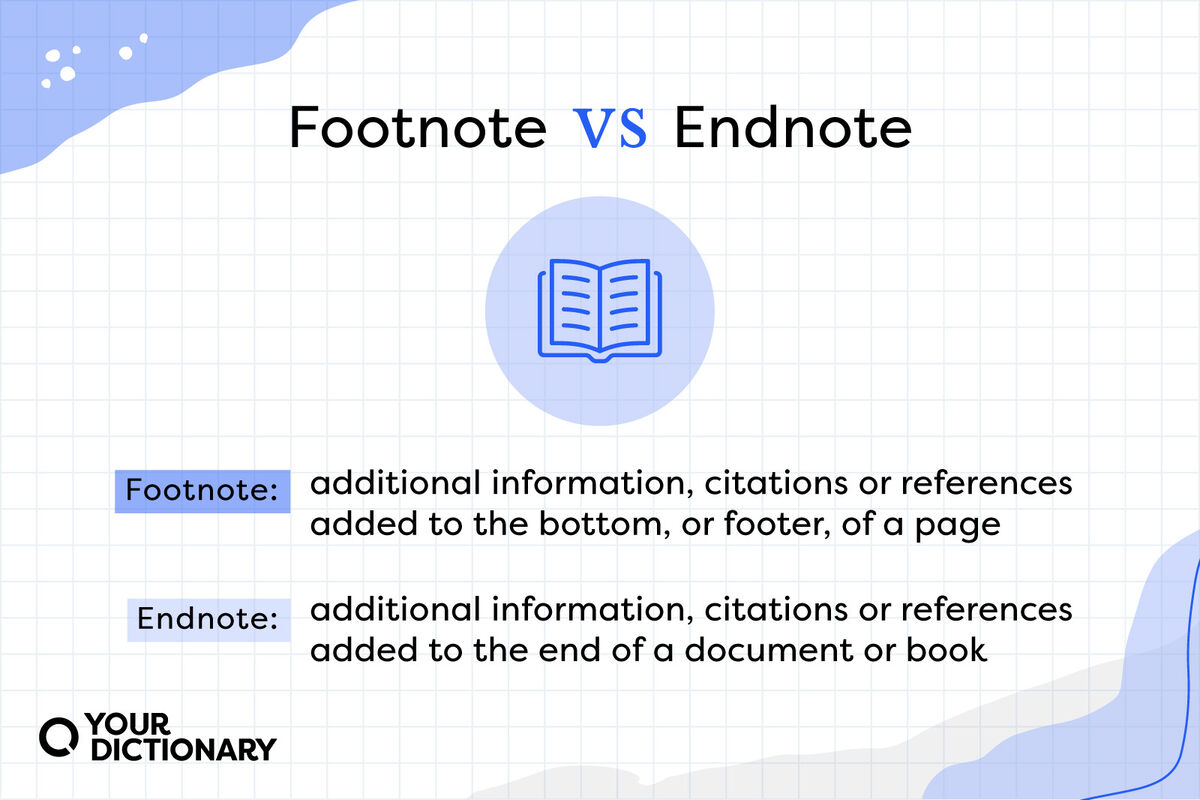
They might seem like a drag or an extraneous addition to your research papers, but footnotes and endnotes are a great opportunity to reinforce your ideas, add more information and supply citations. While some people refer to them as the same thing, footnotes and endnotes have subtle differences that can affect your next research paper.
Footnotes: Started From the Bottom
Sometimes, people will mistakenly refer to notes at the end of a document or book as footnotes, but footnotes are notes that go at the bottom, or footer, of the page. They usually appear as a numbered list with each number corresponding to a superscript number in the body of the text.
For example, MLA footnotes are formatted:1Author name, “Title in Quotes” (City, Publisher, Year) Page number. For example:
1Mary Wollstonecroft Shelley, “Frankenstein, or, The Modern Prometheus” (New York, Oxford University Press, 1998) 42.
The Function of Footnotes
In research papers, scholarly articles and professional documents, footnotes are most commonly used as a means of providing a short citation. This citation is typically more specific than what is provided by a bibliography. For example, a footnote citation typically includes a chapter or page number of the cited text.
In literature, footnotes can provide basically any comment, explanation or other information that the writer deems necessary.
Endnotes: This Is the End
Endnotes appear at the end of a text. In a book or longer document, endnotes may appear at the end of every chapter or at the end, in the back of the book.
Endnotes aren’t common in MLA style, but Chicago and Turabian styles call for endnotes and a bibliography. Thankfully, the format stays largely the same: 1Author name, Title in Italics (City, Publisher, Year) Page number.
The Function of Endnotes
Endnotes serve the same basic purpose as footnotes, allowing for citations or otherwise directing the reader to your sources and further information, but at the end of the document instead of the bottom of the page.
When To Use Footnotes and Endnotes
The appropriate time to use footnotes and endnotes largely comes down to your personal preference and the style guide that you’re working with. The Chicago Manual of Style is one of the main style guides that calls for endnotes, footnotes and a bibliography.
If you have a longer comment or citation, it’s typically better to include them in endnotes as putting them in the footer may disrupt the formatting of the page. However, including a lot of endnotes can be annoying because it forces the reader to constantly turn to the back of the book or document.
End On a Positive Note
Many teachers and instructors will require footnotes or endnotes to research papers, which is just good practice. Even if you don’t see yourself writing many footnotes in the future, it’s instilling the idea of finding and citing trusted sources.